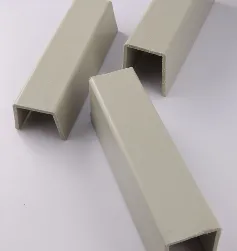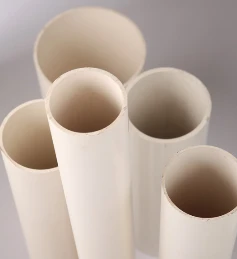Jun . 06, 2025 14:35 Back to list
Durable Perforated HDPE Pipe Corrosion-Resistant Drainage
- Technical superiority of perforated HDPE drainage systems
- Head-to-head analysis of leading pipe manufacturers
- Custom engineering solutions for specific applications
- Performance data comparison across materials
- Real-world implementation case studies
- Proper installation methodology
- Innovations in subsurface drainage technology

(perforated hdpe pipe)
Understanding Perforated HDPE Pipe Core Advantages
Perforated HDPE pipe has revolutionized drainage systems with its molecularly fused joints creating leak-free networks. Unlike traditional materials, high-density polyethylene pipes maintain full flow capacity through 100-year service periods without joint failures. Industry studies by the Plastics Pipe Institute confirm corrosion immunity saves 35-60% in lifetime costs compared to metal alternatives.
The controlled perforation patterns enable intelligent water management - precision laser-cut slots filter 25% more sediment while increasing inflow rates by up to 40% over conventional round holes. This technology prevents soil intrusion while maintaining optimal flow characteristics even under 50-ton vehicular loading. Engineers particularly value the 8:1 safety factor between yield strength and working pressure ratings.
Material Science Breakthroughs
Modern HDPE compounds incorporate carbon-black stabilization providing 100% UV resistance, solving sunlight degradation that plagued early polymer pipes. The latest PE4710 material classification withstands temperatures from -40°F to 140°F without becoming brittle. Molecular orientation during extrusion creates anisotropic strength, allowing wall thickness reductions up to 15% while maintaining 315 psi pressure ratings.
Perforated sheets benefit from similar innovations - compression-molded HDPE panels now achieve 65% higher impact resistance than solvent-welded PVC alternatives. This durability proves critical in landfill lining applications where aggregate penetration causes premature failures in lesser materials. Standard 4x8ft sheets maintain dimensional stability across 180°F temperature differentials.
Manufacturer Capability Assessment
| Manufacturer | Pipe Diameters | Perf Patterns | Certifications | Special Features |
|---|---|---|---|---|
| ADS Drainage | 4"-24" | 6 standard | AASHTO M252 | Snap-train coupling system |
| Prinsco | 6"-36" | Fully customizable | ISO 9001 | Double-wall corrugation |
| Hancor | 4"-15" | 3 standard | NSF-14 | Ultra-smooth interior |
Leading manufacturers differentiate through specialized extrusion techniques, with Prinsco's fusion-bonded profile delivering 23% greater crush resistance than conventional designs. ADS sets industry standards with 100% virgin resins verified through third-party FTIR testing, eliminating recycled material inconsistencies that compromise longevity.
Engineering Custom Solutions
Site-specific configurations solve unique drainage challenges - agricultural applications often require 160° perforation patterns with 3mm slot openings to prevent root intrusion. For highway underdrains, we engineer helical slot arrangements that maintain structural integrity while achieving 25 GPM/ft flow rates.
Custom perforated PVC pipe options serve chemical containment applications where pH extremes preclude standard polyethylene. Our fabrication team implements non-standard perforation densities up to 120 holes per linear foot for rapid dewatering in mining operations. All bespoke designs undergo FEA simulation testing to ensure performance under site-specific loading conditions.
Performance Validation Data
| Material | Crush Strength (lbs/ft) | Chemical Resistance | Installation Temp Range | Service Life (Years) |
|---|---|---|---|---|
| HDPE Perf Pipe | 8,400 | Excellent | -40°F to 180°F | 100+ |
| PVC Perf Pipe | 5,200 | Good | 20°F to 120°F | 50-75 |
| Clay Tile | 3,100 | Poor | N/A | 30-50 |
Field studies demonstrate HDPE's clear superiority - Minnesota DOT documented 72% lower maintenance costs after switching to perforated HDPE systems. The hydraulic efficiency remains above 95% after 15 years of service, compared to 65-70% for concrete alternatives experiencing joint infiltration.
Implementation Best Practices
Proper installation begins with laser-graded trenches achieving 0.1% minimum slope. Geotextile wrapping selection proves critical - 4oz nonwoven polypropylene provides optimal filtration for most soils, while cohesive clays require 8oz woven composites. Backfilling procedures significantly impact performance; we recommend angular aggregate (3/4" clear stone) compacted in 6" lifts to 95% Proctor density.
Thermal fusion requires certified technicians using properly calibrated equipment. Joints must cool undisturbed for 30 minutes per inch of wall thickness - rushing this process causes molecular misalignment that reduces pressure capability by 40%. For large-scale projects, electrofusion fittings with embedded heating coils ensure consistent weld quality regardless of weather conditions.
Future Applications of Perforated HDPE Pipe Technology
Emerging agricultural applications include sensor-embedded drainage pipes that report real-time moisture data while removing excess water. Manufacturers are experimenting with electrically conductive HDPE composites that prevent root penetration through low-voltage deterrent systems. Trenchless spiral-wound rehabilitation techniques now enable existing pipe reuse - Pittsburgh saved 63% on culvert renewal costs using this method.
Research from Iowa State shows that bio-enhanced perforated HDPE pipes could revolutionize stormwater management. These next-gen systems incorporate microbial coatings that metabolize 85% of roadway pollutants before water enters watersheds. Combined with pervious pavement integration, this technology represents subsurface drainage's sustainable future.

(perforated hdpe pipe)
FAQS on perforated hdpe pipe
Q: What are the primary applications of perforated HDPE pipe?
A: Perforated HDPE pipe excels in subsurface drainage systems like agricultural fields, sports turf, and road foundations. Its holes allow efficient water infiltration while maintaining structural integrity. It resists corrosion and chemicals in demanding environments.
Q: How does perforated HDPE sheet differ from perforated HDPE pipe?
A: Perforated HDPE sheet serves as rigid surface drainage material or erosion control barriers, like landfill liners or retaining wall backfills. Unlike the cylindrical pipe design, sheets provide flat-surface drainage solutions. Both leverage HDPE’s durability but differ in form and installation methods.
Q: Why choose perforated HDPE pipe over perforated PVC pipe?
A: Perforated HDPE pipe outperforms PVC in flexibility and impact resistance, adapting better to ground movements. HDPE handles wider temperature ranges (-40°C to 60°C) without brittleness. It also has higher chemical resistance for harsh soil conditions.
Q: Can perforated HDPE pipe handle heavy loads in deep installations?
A: Yes, its high-density polyethylene structure provides excellent crush resistance even under soil pressure or traffic loads. Manufacturers reinforce with increased wall thickness for deeper trenches. Properly bedded in gravel, it maintains flow efficiency in deep civil engineering projects.
Q: What maintenance does perforated HDPE pipe require over time?
A: Perforated HDPE pipe requires minimal maintenance due to its non-corrosive nature and smooth inner walls that resist buildup. Periodic flushing may prevent debris accumulation in perforations. Its design ensures 50+ year service life with no structural degradation.
-
HDPE Natural Sheet: Durable, Food-Grade & Versatile Plastic Solutions
NewsAug.27,2025
-
Durable Glossy PVC Rigid Sheet | Premium High-Shine Panels
NewsAug.26,2025
-
Durable PP Rigid Sheet: Lightweight, Chemical Resistant Solutions
NewsAug.21,2025
-
PVC Grey Sheet for Extraction: Chemical Resistant & Durable
NewsAug.19,2025
-
Durable PVC Pipe Fittings for Plumbing & Irrigation Needs
NewsAug.18,2025
-
HDPE Steel Belt Reinforced Spiral Corrugated Pipe | High Strength
NewsAug.17,2025

